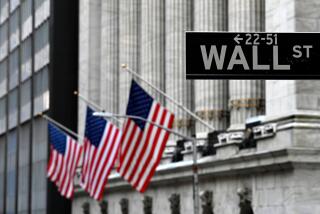Minimizing the Effects of S&P; Additions
- Share via
Whenever Standard & Poor’s announces a change in its 500-stock index, managers of the estimated $1-trillion-asset funds that mimic the index must scramble to buy shares of the new component in amounts proportional to its weighting in the index. A component that is ousted gets just as quickly dumped by index funds.
The mad rush for shares of new S&P; 500 components can lead, quite predictably, to sudden spurts in their prices. These price jumps average about 5%, S&P; says, but in some cases, they can be much more dramatic.
When Yahoo was added to the index late in 1999, for example, it soared 35% in two days.
Such wild moves trouble S&P;’s David M. Blitzer, head of the index’s stock-picking committee. He would prefer that S&P;’s decisions not roil the stock market at all. But when an index trails $1 trillion of managed money behind it, that doesn’t appear possible.
One thing S&P; said it has done to try to minimize turbulence is to avoid adding stocks that are in the midst of hot streaks, so that their addition to the index doesn’t cause the momentum to accelerate.
If a stock jumps to $85 from $50 in a few weeks, Blitzer said, the committee probably would watch it for a while until it simmers down.
With most of S&P;’s recent tech-stock additions, there have been fewer worries about the moves adding to momentum--given that the entire tech sector has been in a steep decline since Sept. 1.
More to Read
Inside the business of entertainment
The Wide Shot brings you news, analysis and insights on everything from streaming wars to production — and what it all means for the future.
You may occasionally receive promotional content from the Los Angeles Times.










